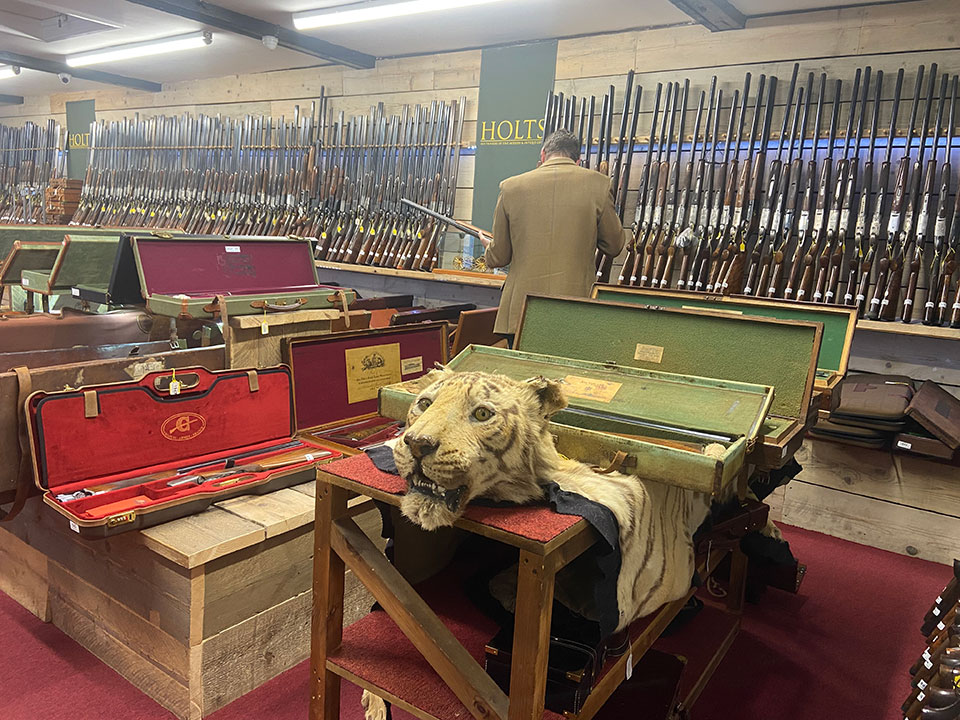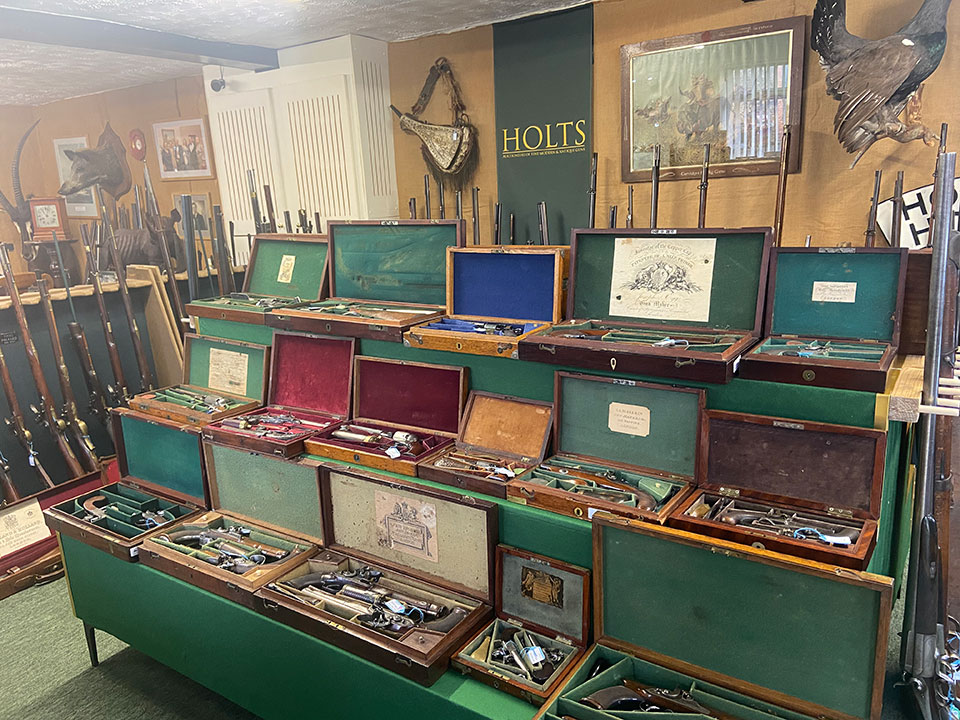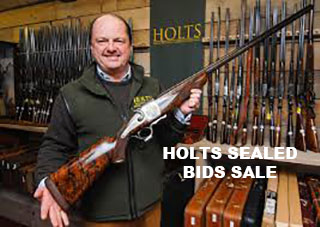December rocked our world somewhat, with remarkable results from Holt’s, which bucked many of the trends of the last two or three years. Gavin Gardiner also held a similarly successful sale on 14th December.
He got a creditable £11,000 for a Horsley hammer ejector, showing that demand is still high for these rare items but perhaps not what they once were. Bonhams sold a Boss hammer ejector for a sum in excess of £27,000, back in 2014.
We can, however, now see that if prices drop far enough, buyers will come to take advantage of them, if the pound drops far enough, overseas buyers (especially Americans) will swarm into the space and get active.

Auctions remain a popular venue for both buyers and sellers, though they are a tough place for the Trade to operate as buyers, given the auctioneer’s fees and the presence of the end-user buyer at every major auction these-days. There is simply no margin left to factor-in profit, over risk and investment.
Not that this is a problem for the auction houses. Their remit is to sell; and it matters not to whom they sell. Indeed, if they can hit retail customers rather than Trade buyers, they will return more to their consigners. The risk is on the buyer and buyers are, apparently, increasingly prepared to take that risk.
Talking of risk, I broke one of my own rules last year. I always warn people against buying anything from an auction they have not actually seen, inspected, or had appraised by someone independent and with the necessary expertise.
Having missed the viewing, I made a call and bought, sight unseen, an unsold London hammer pigeon gun for the relatively modest sum of £1,000, all in.
I took a punt and thought it worth a go.
The staff told me the barrels were dented and pitted but thick and they had not been re-proofed or, apparently, lapped. I took a punt and thought it worth a go. Best hammer pigeon guns are very rare and if this one proved restorable, it would be a very desirable thing.
I picked up the gun in person, having paid for it by ‘phone. It was immediately apparent that the barrels were awful, but too late to cry about it, I took it to my barrel-maker to see what could be done. We have rescued some bad looking barrels in the past, so I had my fingers crossed.
As an aside, it was also apparent that the gun had been re-stocked a long time ago (not badly but not to original standards). Had I inspected it prior to the sale, I would have been aware of both these issues in advance.
Unfortunately, if unsurprisingly, the news on the barrels was bad. The pits were so deep that knocking dents out just made them sink into the pits and get worse. With the deeper pits reducing the wall thickness to 17 thou’, there was no hope and we had to call it a day.
It cost three hours of work to determine for sure, but these barrels were scrap.
Now, this does raise a question about how auction houses determine what is in proof and what is not. They seem to stick largely to bore dimensions. If the bore is not so enlarged that it makes it to the next proof size, the gun is sold as a ‘gun’. If it steps over the margin (usually 10 thou’ over last proof size), it is sold as a ‘stock action and forend only’. The barrels are cut so as to be useless, unless sleeved.
Two similar London guns sold last year exemplify this nicely. The one described earlier in this article was sold as ‘in proof’, despite being horribly dented, pitted and rusty inside.
Another London hammer gun, by the same maker, sold earlier in 2022, as a ‘stock, action and forend’, despite the fact the barrels were clean, thick and in good order, apart from being wider in the bore than the proof law says is allowed. Of the two, the latter was in, by far, the most serviceable condition.
while the bore dimensions act as a ’clear line in the sand’ regarding proof status, his standard approach is more holistic
I raised the subject in conversation with a friend who works at a major auction house, who told me that, while the bore dimensions act as a ’clear line in the sand’ regarding proof status, his standard approach is more holistic and if a gun is clearly dangerous, although technically ‘in-proof’ he will enter it into the auction as a ‘stock action and forend only’ or make its unsuitability for use explicit in the description (adding something like; ‘barrels severely pitted and badly dented’).
Many do, as a matter of course, also refer to barrel-wall thickness in descriptions; ‘barrels below recommended minimum’ or ‘left barrel at 17 thou’ etc. These details are not always available at smaller non-specialist auctions.
Price estimate should be taken into consideration as an indication of condition too: If a 1930 Purdey is estimated at £100-£200, no reasonable buyer can truly expect it to be serviceable, for example.

The Proof House booklet guiding the Trade as to assessing proof does mention that proof status is not strictly restricted to measurements alone but is not detailed or explicit beyond that point.
I could have raised the issue with the auctioneers and they would probably have conceded the point but I took it as a matter of honour that it was my mistake, my risky venture and I would take it on the chin as a learning experience. Or, rather, a reinforcement exercise in reminding myself that the caution I have generally exercised to date is wise council and something to which I shall return.
This was my error, not a case of malpractice by the auction house, in any way.
In the Trade, we do want every opportunity to buy guns in poor condition and restore them if they have the potential to be restored, so we are amenable to looser interpretations of what is ‘in proof’ and what isn’t.
That must be weighed against the protection of the public; the one factor which dwells at the very heart of the Proof Act.
Sealed Bids auction disposed of over 60% of lots
As we look to 2023, Holt’s are already building their on-line catalogue and hoping to replicate the fantastic results they achieved in December, when 86% of the main sale lots sold on the day. That figure rose to over 90% with post-sale deals added.
The huge Sealed Bids auction disposed of over 60% of lots offered and, as always offered a lot of options to those on lower budgets with the time and energy to hunt out bargains and projects.
Gavin Gardiner has also announced a sale for 26th April 2023 and begins his valuation days with one in Harrogate on 1st February.
Bonhams, whose very successful November sale still lingers in the memory have yet to announce their first auction of 2023 but expect it mid-summer, with consignments being taken now.
Published by Vintage Guns Ltd on




